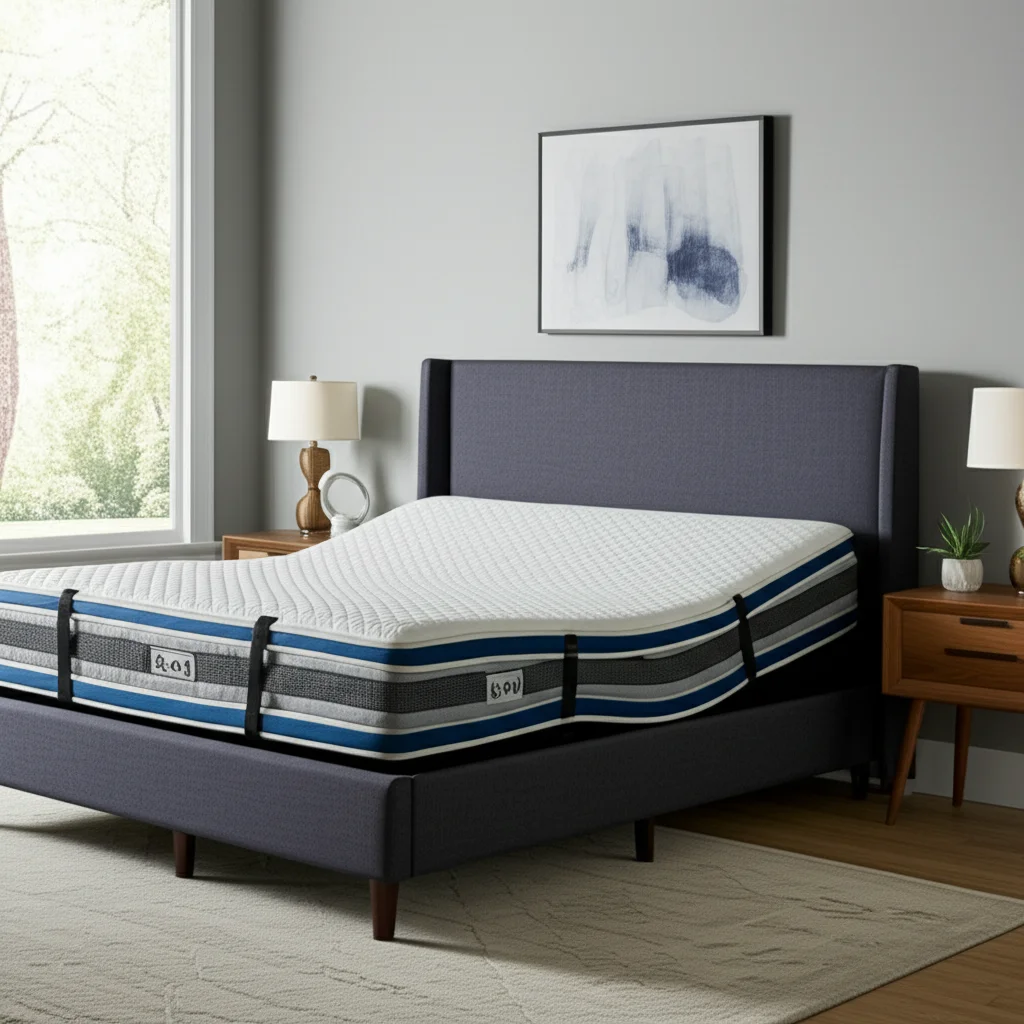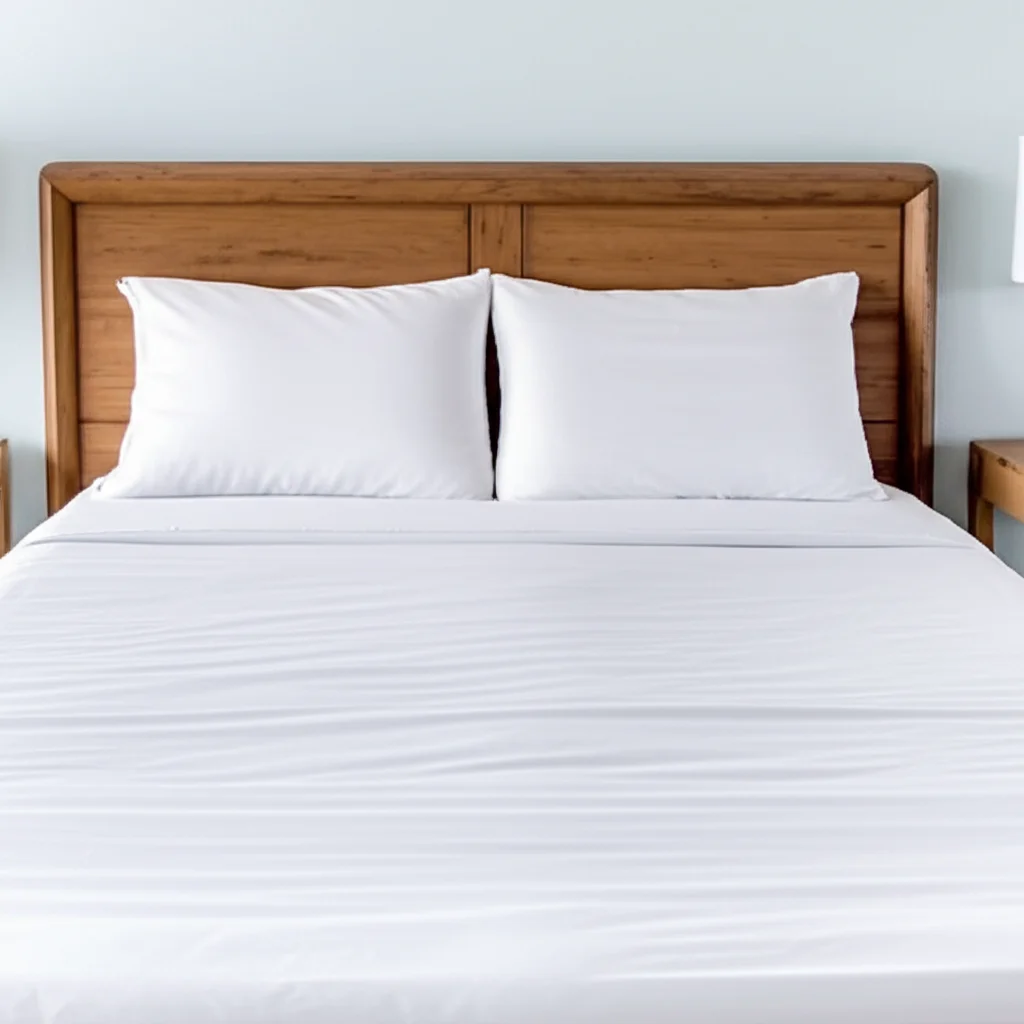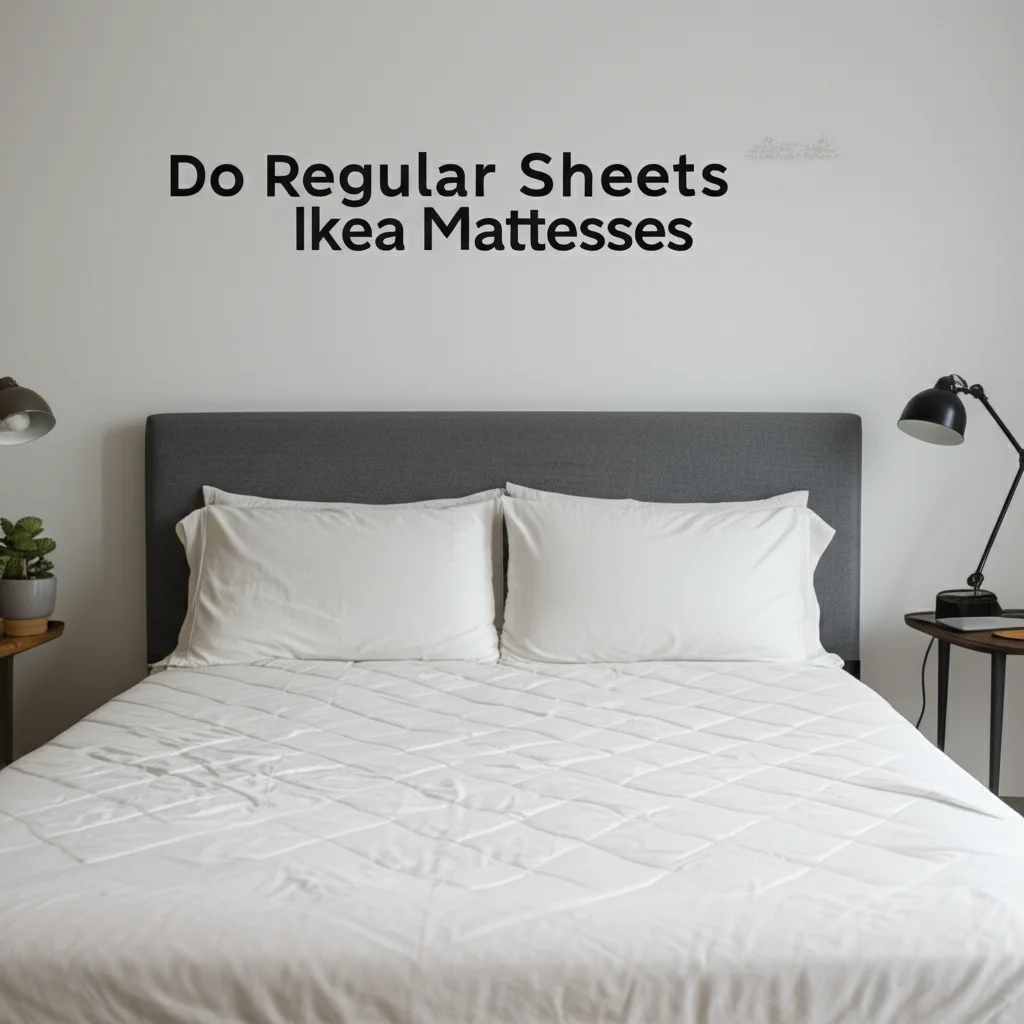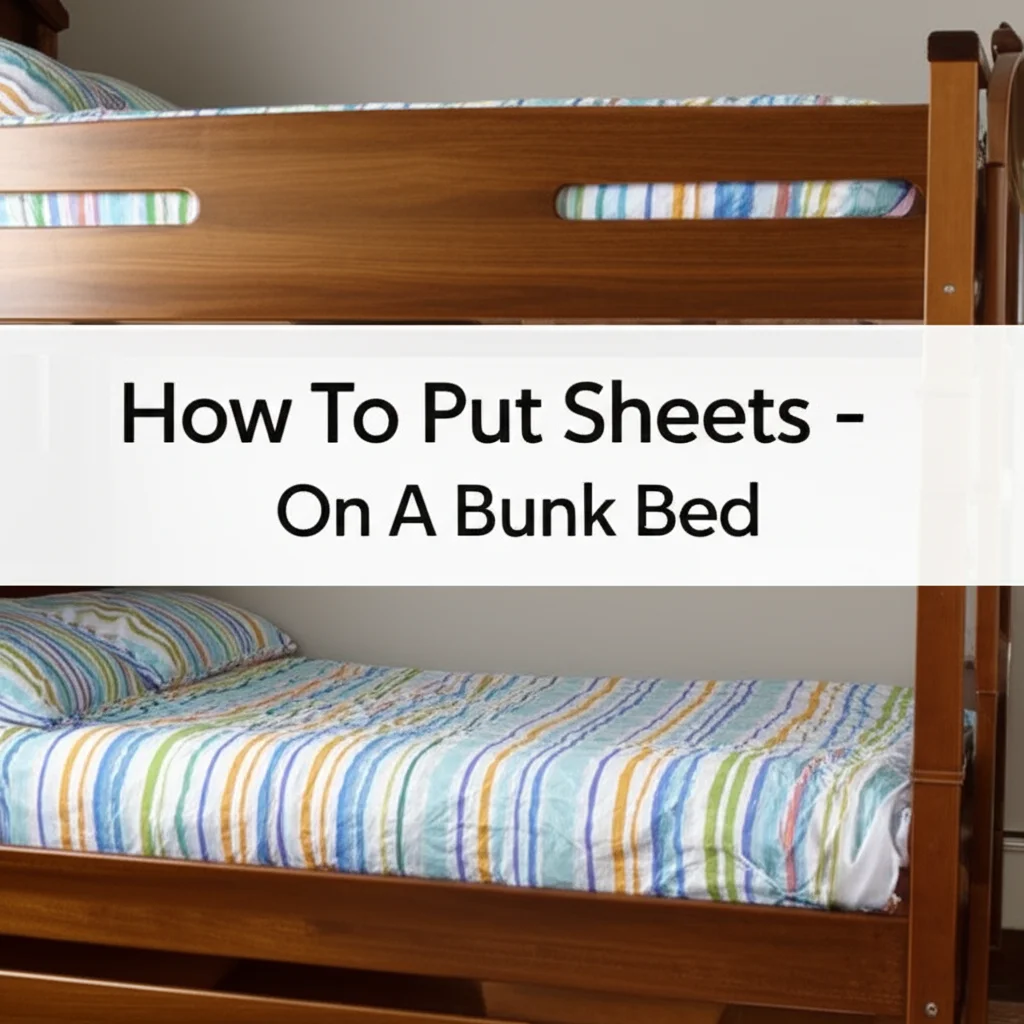· Todd Martin · Bedding · 20 min read
How To Keep Sheets On Adjustable Bed

How To Keep Sheets On Your Adjustable Bed for a Perfect Fit
It’s frustrating when your bed sheets constantly slip off, especially on an adjustable bed. I know this feeling well. You try to raise the head or foot, and suddenly, your carefully made bed turns into a tangled mess. This problem is very common with adjustable bed frames.
Adjustable beds offer great comfort and health benefits, but they pose unique challenges for bedding. Traditional sheets often cannot handle the constant movement and shape changes. This article will show you practical ways to keep sheets on your adjustable bed. We will cover choosing the right sheets, using effective fasteners, and mastering smart bed-making techniques. Get ready for a comfortable, slip-free sleep.
Takeaway:
- Choose deep-pocket or specifically designed adjustable bed sheets.
- Utilize sheet fasteners like straps, clips, or suspenders.
- Employ non-slip mattress pads or grippers.
- Master proper bed-making techniques, including hospital corners.
- Consider using a top sheet alternative for less bulk.
To keep sheets on an adjustable bed, use deep-pocket sheets or those designed for adjustable bases. Secure them with sheet straps, grippers, or suspenders. Ensure your mattress is not sliding, and apply proper bed-making techniques like hospital corners to prevent slippage during adjustments.
Why Sheets Slip on Adjustable Beds
Adjustable beds move in ways a standard bed does not. This movement puts stress on your bed sheets. When you raise the head or foot, the mattress bends. This bending pulls the fitted sheet taut, often causing the corners to pop off. Gravity also plays a role as sheets try to slide down the inclined surfaces.
The constant friction against the mattress surface also contributes to slippage. Some mattress materials are smoother than others. This smoothness can make sheets more likely to slide around. Understanding these forces helps us choose better solutions.
- Mattress Movement: The core reason is the bending and stretching of the mattress. Standard sheets are not designed for this dynamic motion.
- Fabric Tension: As the bed adjusts, the fabric of the fitted sheet stretches. If it lacks enough elasticity or depth, it will lose its grip.
- Mattress Material: Smooth mattress covers, like some memory foam surfaces, offer less friction. This lack of friction allows sheets to slide more easily.
- Inadequate Sheet Size: Sheets that are too small or not deep enough cannot properly wrap around the mattress. This makes them prone to slipping off with any movement.
Addressing these issues requires a multi-faceted approach. We need to focus on sheet type, securing methods, and overall bed setup. A stable mattress is also key. You might also want to look at how to keep mattress from sliding on adjustable base for a complete solution to movement.
Choosing the Right Sheets for Adjustable Beds
The type of sheets you use makes a huge difference. Not all sheets are created equal, especially for adjustable beds. I learned this the hard way after many sleepless nights wrestling with popped-off corners. The right sheets are the first line of defense against slippage.
Look for specific features when buying new sheet sets. These features include pocket depth and fabric stretch. Investing in the correct sheets saves you a lot of hassle later. Think of it as preparing your bed for maximum comfort and minimal fuss.
Deep-Pocket Sheets
Deep-pocket sheets are essential for adjustable beds. They have extra fabric in the corners. This extra fabric allows the sheet to wrap further under the mattress. Standard sheets usually have a pocket depth of 9-12 inches. Adjustable beds often need sheets with pockets of 15 inches or more. Some mattresses are also thicker. Measure your mattress depth before you buy.
- Measure your mattress: Find out the exact depth of your mattress. This measurement will help you pick sheets that fit perfectly.
- Look for 15-22 inch pockets: Many deep-pocket sheets offer this range. This ensures ample fabric to tuck under the mattress.
- Check corner elastic: A strong, continuous elastic band around the entire bottom edge is better. It provides a more secure grip than elastic only at the corners.
Sheets Designed for Adjustable Beds
Some manufacturers create sheets specifically for adjustable bases. These sheets often have unique features. They may include extra elastic bands, corner straps, or even split designs for split king or queen adjustable beds. These specialized sheets take the guesswork out of finding a good fit. They are designed to move with your bed.
- Built-in corner straps: These sheets often have straps sewn directly into the corners. The straps go under the mattress, pulling the sheet taut.
- Enhanced stretch fabrics: Some sheets use jersey knit or a blend with spandex. These materials stretch and recover better than traditional cotton. This elasticity helps the sheet conform to the bed’s changing shape.
- Split top sheets: For split king or queen beds, you can get sheets that are split only at the top. This allows each side to adjust independently without disturbing the other. Similarly, there are also insights on how to make up a split king bed for comprehensive guidance.
Choosing the right sheets is the first and most important step. It creates a solid foundation for your bedding.
Effective Sheet Fasteners and Grippers
Even with the right sheets, sometimes you need extra help. This is where sheet fasteners come in. They add an extra layer of security. These tools keep your sheets firmly in place, even with constant adjustments. I have tried several types, and each has its benefits.
Sheet fasteners are small, inexpensive solutions. They can make a big difference in how well your sheets stay on. These devices physically attach the sheet to the mattress or to itself. This prevents the corners from lifting or the sheet from bunching up.
Sheet Straps and Suspenders
Sheet straps are popular for a reason. They work well. These straps typically have clips or grippers on each end. You attach them to the corners or sides of the fitted sheet. The strap then runs under the mattress, connecting to another part of the sheet. This creates tension that holds the sheet down.
- Corner straps: These are shorter straps that connect two adjacent corners of the fitted sheet underneath the mattress. They pull the corners towards the center.
- Criss-cross or diagonal straps: These are longer straps. They run from one corner of the fitted sheet diagonally to the opposite corner under the mattress. This method provides stronger tension across the entire sheet.
- Adjustable suspenders: These work like clothing suspenders. They have adjustable elastic bands with clips. You clip them to the edges of the fitted sheet on all four sides. Then, you pull them taut and connect them underneath the mattress. This method is highly effective for keeping the sheet flat.
Mattress Grippers and Non-Slip Pads
Sometimes, the issue is not just the sheet but the mattress itself. A smooth mattress surface can make sheets slide more easily. Mattress grippers and non-slip pads solve this problem. They create friction between the sheet and the mattress.
- Rubberized mesh pads: These are thin, breathable pads made of rubberized mesh. You place them directly on top of the mattress, under the fitted sheet. The material creates a high-friction surface. This prevents the fitted sheet from sliding around.
- Silicone corner grippers: These are small, silicone-backed patches. You place them under each corner of the fitted sheet. They adhere slightly to the mattress surface. This creates a strong hold at the most vulnerable points.
- Velcro strips: For a more permanent solution, you can use adhesive-backed Velcro strips. Attach one part to the underside of the fitted sheet’s corners. Attach the matching part to the top of the mattress corners. This creates a very secure attachment. However, this method requires attaching things to your mattress. Be sure this is acceptable for your mattress type.
Using a combination of these fasteners and grippers often provides the best results. They ensure your sheets stay put, no matter how much your adjustable bed moves.
Mastering the Art of Making an Adjustable Bed
Beyond the right sheets and accessories, your bed-making technique matters. A properly made bed will stay neater. This is true even with the constant movement of an adjustable bed. I’ve found that paying attention to how I tuck and layer sheets makes a big difference.
Good bed-making is not just about looks. It is about functionality. For an adjustable bed, it means ensuring the sheets are secure before any adjustments happen. This simple step can prevent much of the common slippage.
Tucking Techniques for Fitted and Flat Sheets
The way you tuck your sheets affects their staying power. For the fitted sheet, ensure it is pulled down as far as possible. Make sure it is taut all around. For the flat sheet, traditional tucking methods are often best.
- Deep tucking: After putting on the fitted sheet, lift the mattress slightly. Pull the sheet deeply under all four sides. The more fabric you have tucked under, the more secure it will be.
- Hospital corners: This classic method is excellent for flat sheets. First, lay the flat sheet evenly over the mattress. Tuck the sheet under the foot of the bed. Then, lift the side of the sheet about 16 inches from the corner. Fold it up onto the mattress. Tuck the hanging part of the sheet tightly under the mattress. Pull the folded-up part down over the tucked section. Then tuck it snugly under the mattress. Repeat on both sides at the foot of the bed. This creates a neat, tight corner that resists coming undone. You can also apply a similar technique to how to keep top sheet tucked in on adjustable bed.
Reducing Top Sheet Slippage
The flat sheet, or top sheet, can also slide around. It often gets kicked off or bunches up. This is especially true when the bed is articulated. There are ways to keep your top sheet more secure and comfortable.
- Omit the top sheet: Many people opt not to use a top sheet on an adjustable bed. They use just a fitted sheet and a duvet or comforter. This reduces the number of layers that can slip. It also simplifies bed making.
- Use a duvet with loops: If you use a duvet, choose one with corner loops. Secure it to your duvet cover’s ties. This prevents the duvet from shifting inside its cover. This movement can sometimes pull on the top sheet if it’s layered underneath.
- Sheet clips or suspenders for top sheet: Just like the fitted sheet, you can use sheet clips on the top sheet. Clip them to the underside of the sheet at the foot or sides. Then, attach them to the fitted sheet or directly under the mattress. This keeps the top sheet from sliding down.
- Consider a sewn-in top sheet: Some specialized bedding sets for adjustable beds feature a top sheet sewn directly to the fitted sheet at the foot. This ensures the top sheet always stays connected and tucked.
These techniques ensure your entire bed remains neat and secure. They allow you to enjoy the full benefits of your adjustable bed without sheet frustration.
Innovative Solutions for Persistent Sheet Slippage
Sometimes, traditional methods are not enough. For those really stubborn sheets, or if you simply want the best possible hold, there are innovative products and approaches. These solutions go beyond basic straps. They offer stronger, more integrated ways to keep your sheets firmly attached.
I have found that combining a few different strategies often works best. Each additional layer of security reduces the chance of slippage. These innovative ideas might be exactly what you need for a truly slip-proof adjustable bed.
Mattress Holders and Retention Bars
Adjustable beds often come with a retainer bar at the foot. This bar helps keep the mattress from sliding down. But sometimes, a mattress can still shift. Or, you might need extra retention at the sides or head.
- Built-in retainer bars: Many adjustable bed bases include a metal bar at the foot. This bar prevents the mattress from sliding off the frame. Ensure it is correctly installed and functioning.
- Side retention clips/straps: Some adjustable beds have optional clips or straps on the sides. These secure the mattress directly to the base. If your bed does not have them, you can often buy universal ones.
- Non-slip mattress covers: These are full mattress covers that go under your fitted sheet. They are made from high-friction materials like silicone or rubber. They are similar to non-slip pads but cover the whole mattress. They provide a continuous grip.
These features stabilize the mattress first. A stable mattress makes it easier for sheets to stay put. For more on mattress stability, you might want to read how to keep mattress from sliding on adjustable base.
Integrated Bedding Systems
Some companies offer complete bedding systems designed for adjustable beds. These systems are often more expensive but provide a seamless solution. They aim to solve the sheet slippage problem from the ground up.
- Zippered sheet systems: These systems consist of a base layer that zips onto the mattress. Then, a top sheet or duvet cover zips onto the base layer. This creates a very secure connection. Each layer moves perfectly with the bed.
- All-in-one sheet sets: Some sets combine the fitted sheet and top sheet into one unit. They might have a foot-box design or a sewn-in flap. This keeps the top sheet from coming untucked at the foot.
- Modular bedding: This newer concept involves separate components that snap or zip together. You might have a fitted sheet base, a top sheet, and a duvet cover. All components are designed to stay connected during bed articulation.
These integrated systems are a premium option. They offer the highest level of convenience and security for adjustable beds. They virtually eliminate sheet slippage issues.
Caring for Your Sheets to Maintain Fit
Even the best sheets can lose their effectiveness if not cared for properly. Sheet care is not just about cleanliness. It also affects the fabric’s elasticity and shape. Proper care helps your sheets maintain their grip.
I have found that following care instructions extends the life of my sheets. It also keeps them fitting snugly. This means less time struggling with loose sheets. For general sheet care, you can learn more about how to clean bed sheets.
Washing and Drying Best Practices
Over-washing or improper drying can damage sheet fibers. This damage can lead to stretching or shrinking. Both can make sheets less effective on an adjustable bed.
- Follow label instructions: Always check the care tag on your sheets. Different fabrics have different needs. Cotton, bamboo, and synthetic blends will require specific wash cycles and temperatures.
- Use gentle cycles: Harsh wash cycles can stretch out elastic bands and weaken fibers. A gentle or delicate cycle is usually best. Use cold or warm water, not hot, to preserve elasticity.
- Avoid high heat drying: High heat can damage elastic and shrink natural fibers. Tumble dry on low heat or air dry when possible. Remove sheets from the dryer while slightly damp. Then, stretch and smooth them out. This helps maintain their shape.
- No fabric softener: Fabric softener can build up on fibers. This reduces their natural elasticity and breathability. It can also make some fabrics feel slicker. This might lead to more slippage.
Storing Sheets Properly
How you store your sheets also impacts their longevity and fit. Proper storage prevents creases and damage. It keeps them ready for use.
- Fold neatly: Folding sheets neatly prevents permanent creases. Creases can make sheets less smooth and harder to fit tightly on the bed. You can even fold a fitted sheet to maintain its shape better.
- Store in a cool, dry place: Humidity and extreme temperatures can damage fabric over time. A linen closet or dresser drawer is ideal. Ensure the space is well-ventilated.
- Avoid overcrowding: Do not cram sheets into tight spaces. This can compress fibers and elastic. Give your sheets room to breathe.
By caring for your sheets, you ensure they retain their ability to hug your mattress tightly. This consistent fit is key for adjustable beds.
Addressing Specific Challenges with Adjustable Bed Sheets
Sometimes, unique situations arise with adjustable beds. These situations require tailored solutions. Whether it’s a split bed or a specific mattress type, addressing these challenges head-on ensures a perfect fit. I often hear about these problems from friends with adjustable beds.
Every adjustable bed setup is slightly different. What works for one person might need a small tweak for another. Being aware of common specific issues helps. It allows you to find a custom solution for your comfort.
Split King/Queen Bedging Solutions
Split king and split queen adjustable beds are popular. They allow each partner to adjust their side independently. This setup, however, presents a unique sheet challenge. You cannot use a single king or queen fitted sheet.
- Two Twin XL fitted sheets for a Split King: A standard king-size bed is the same width as two Twin XL beds placed side-by-side. For a split king adjustable bed, you need two Twin XL fitted sheets. Each sheet goes on its respective mattress. You can then use a single king-size flat sheet and duvet over both mattresses. For a comprehensive guide on this, you can refer to how to make up a split king bed.
- Two Split Queen fitted sheets for a Split Queen: Similar to the split king, a split queen uses two narrower queen mattresses. You will need two specific “split queen” fitted sheets. These are less common than Twin XL but are available.
- Split-top sheets: For a split king or split queen, you can find sheets that are fully connected at the bottom but split at the top (typically 30-34 inches down from the head). This allows independent head articulation while keeping the foot of the bed united.
Heavy Mattresses and Sheet Installation
Some adjustable bed mattresses, like memory foam or hybrid types, are very heavy. This weight can make sheet installation difficult. Pulling the corners down and under a heavy mattress requires effort.
- Team effort: If possible, have someone help you. One person can lift the mattress slightly while the other pulls the sheet corners deep underneath.
- Use sheet grippers or aids: Tools like sheet straps or suspenders can make the process easier. You can attach the clips to the sheet corners first. Then, pull them under and connect them, using the leverage of the straps.
- Gravity assist: When putting on the fitted sheet, adjust the bed to a flat position. This makes the mattress a more uniform shape. Then, once the sheet is on, you can adjust the bed to your desired position.
These specific tips help overcome common hurdles with adjustable bed bedding. They ensure your sheets stay on, providing uninterrupted comfort and sleep.
Maintaining Your Adjustable Bed Base
While sheet-specific solutions are key, the overall health of your adjustable bed base also plays a role. A well-maintained base provides a stable foundation. This stability helps keep sheets from slipping. It also ensures the longevity of your investment.
Regular checks and simple care tasks can prevent problems. This includes keeping the area around the bed clear. It also means checking for any parts that might interfere with sheet movement.
Ensuring Mattress Stability
A mattress that slides on the adjustable base will cause sheet problems. The sheets will move with the mattress, pulling them off the corners.
- Use the retainer bar: Most adjustable bases have a retainer bar at the foot. This metal bar prevents the mattress from sliding downwards. Make sure it is installed correctly and fully engaged.
- Non-slip pads under the mattress: If your mattress still slides, place a non-slip pad between the mattress and the bed base. These are similar to rug pads. They create friction. You can learn more about this by checking out how to keep mattress from sliding on adjustable base.
- Check bed frame alignment: Ensure the adjustable base is properly aligned within any surrounding bed frame. Misalignment can cause the mattress to sit unevenly. This can lead to slippage.
Keeping the Area Clear
Objects under or around the adjustable bed can interfere with its movement. This interference can sometimes pull sheets out of place.
- Avoid clutter: Keep items from under the bed that might obstruct the base’s articulation. Wires, storage boxes, or even thick rugs can get caught.
- Proper bed skirt selection: If you use a bed skirt, choose one designed for adjustable beds. Traditional bed skirts can get caught in the moving parts. This can cause them to tear or pull the sheets. There are insights on how to make a bed skirt for an adjustable bed that can help.
- Check for loose cables: Ensure all power cords and remote cables are neatly tucked away. They should not interfere with the base’s movement or snag on sheets.
By ensuring your adjustable bed base is stable and free from obstructions, you create an optimal environment for your sheets. This holistic approach significantly reduces sheet slippage issues.
FAQ Section
What type of sheets are best for an adjustable bed? Deep-pocket sheets are best for an adjustable bed. Look for pocket depths of 15 inches or more to ensure they wrap fully under the mattress. Sheets specifically designed for adjustable bases, often with built-in straps or enhanced elasticity, also work very well. Materials with some stretch, like jersey knit, can also be beneficial.
Do sheet straps really work on adjustable beds? Yes, sheet straps and suspenders are highly effective on adjustable beds. They create tension that pulls the fitted sheet corners securely under the mattress. Different types, like corner straps or criss-cross suspenders, offer varying levels of hold. They prevent the sheet from popping off during adjustments.
How do I prevent my top sheet from bunching up on an adjustable bed? To prevent your top sheet from bunching, consider using hospital corners when tucking it in. Alternatively, omit the top sheet and use only a fitted sheet with a duvet or comforter. Some specialized bedding sets have the top sheet sewn to the fitted sheet at the foot, preventing slippage entirely.
Why do my sheets keep coming off my adjustable bed? Sheets typically come off an adjustable bed because the mattress bends, creating tension that pulls the fitted sheet corners loose. Common reasons include using sheets with insufficient pocket depth, lack of elastic strength, or a slippery mattress surface. Your sheets may also lack built-in security features.
Can I use a regular fitted sheet on an adjustable bed? You can use a regular fitted sheet on an adjustable bed if your mattress is not very thick and the sheet has strong elastic. However, standard fitted sheets often lack the necessary pocket depth or elasticity. They are more prone to slipping off during the bed’s articulation, causing frustration.
What is the easiest way to make an adjustable bed? The easiest way to make an adjustable bed involves using deep-pocket or specialty sheets. Lay the fitted sheet on a flat bed, pulling it taut and deep under the mattress. Then, use fasteners like sheet straps. If using a top sheet, opt for hospital corners or consider a zippered bedding system for simplicity.
Conclusion
Keeping sheets on an adjustable bed does not have to be a constant battle. I’ve learned that with the right approach, you can enjoy the full comfort and benefits of your adjustable bed without the hassle of slipping sheets. The key lies in a combination of smart choices and effective techniques.
Start by selecting the proper bedding. Choose deep-pocket sheets or those designed for adjustable bases. Then, enhance their hold with reliable sheet fasteners like straps or mattress grippers. Master simple bed-making techniques like hospital corners for an even tighter fit. For specific challenges like split beds, use tailored solutions such as two Twin XL fitted sheets. By following these steps, you can ensure your sheets stay put, allowing you to relax and enjoy truly undisturbed sleep. Say goodbye to frustrating sheet adjustments and hello to a perfectly made bed every night.





